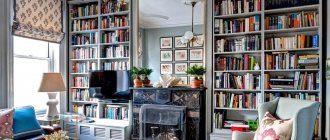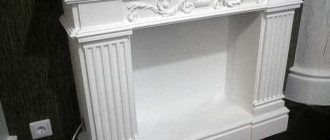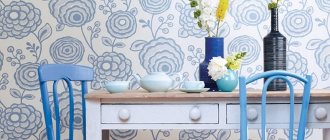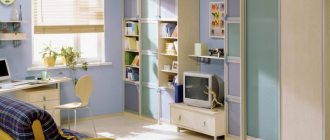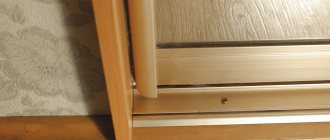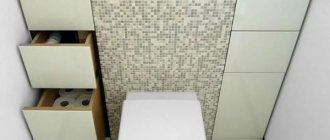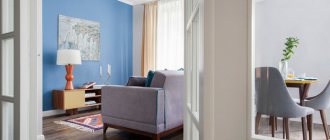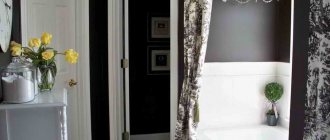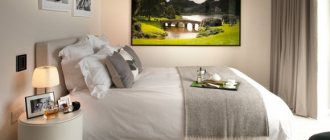Style your mood
If you are a supporter of modern styles - country, modern, hi-tech, minimalism, let's make your office look fashionable, stylish and, of course, functional.
The ossified traditions of decorating the interior of offices and home libraries in the spirit of classicism with its stiffness and desire for pretentiousness are long gone.
Choose the style that makes you feel comfortable. And AtEco-Design specialists will prepare a design project for the interior of your office/library according to all the canons of style, taking into account your wishes.
Literature of artistic content
The most voluminous section of the library, where most beginning book lovers get lost, because they dream of embracing the immensity. Let's start with the basics - any fiction is divided into prose and poetry. A classical library cannot consist of works of the same type; this impoverishes the book collection and turns its perception into “hard work.” Therefore, be sure to choose works of both prose and poetry.
Further, you can create a library according to different principles.
Formation of an art library by historical periods
In fiction, it is customary to distinguish 7 main historical periods:
- Literature of antiquity.
- Middle Ages.
- Renaissance.
- Enlightenment.
- XIX century.
- XX century
- Since the middle of the 20th century - postmodernism.
If everything is more or less clear with the choice of authors who wrote in a certain century, then the initial periods require explanation.
The classics of the ancient world are considered to be authors before the 3rd century AD of the peoples of Greece, Rome, China, India, Iran, Judea (Israel), and Egypt. The most famous authors and works:
- Homer "Iliad", "Odyssey".
- Poetry of Sappho and Anacreon.
- Tragic works - Euripides, Sophocles, Aeschylus.
- Comedies of Aristophanes.
- Philosophical works of Socrates, Plato, Aristotle.
- Authors of the Roman era - Plutarch, Cicero, Horace, Seneca.
World classics of the Middle Ages (IV-XV centuries):
- Christian Gospels.
- "Tristan and Isolde".
- Chrétien de Troyes "Lancelot, or Knight of the Cart"
- Guillaume de Lorris "The Romance of the Rose".
- Spencer "The Faerie Queene".
- Benoit de Saint-Maur "The Romance of Troy".
- "A Novel about the Count of Poitiers."
- "Robert the Devil."
- Polen Paris "Novel about the Fox".
The best works and authors of the Renaissance (XV-XVI centuries):
- Dante.
- Petrarch.
- Boccaccio.
- Shakespeare.
- Lope de Vega.
- Thomas More.
- "Gargantua and Pantagruel" by Rabelais.
- "Don Quixote" by Cervantes.
- Michel Montaigne.
- Thomas More.
- Leonardo da Vinci.
- Edmund Spencer.
- Martin Luther.
- "In Praise of Folly" by Erasmus of Rotterdam.
- "Ship of Fools" by Sebastian Brunt.
Times of Enlightenment:
- Swift "Gulliver's Travels".
- Defoe "Robinson Crusoe".
- Jean-Jacques Rousseau "The New Heloise".
- Choderlos de Laclos.
- Diderot "Encyclopedia".
- Voltaire.
- Lafontaine.
- Moliere.
- Comedies by Fonvizin.
- Fables of Sumarokov.
- Odes of Derzhavin and Lomonosov.
- Goethe.
- Schiller.
- Karamzin “Letters of a Russian Traveler”, “Poor Liza”.
- Thomas Gray.
- Richardson.
By “modern times” the literary heritage is becoming richer and more interesting.
| Classics of the 19th century | XX century | Postmodernism |
| Byron, O. de Balzac, W. Blake, Baudelaire, Heine, Hoffmann, V. Hugo, C. Dickens, A. Daudet, A. Dumas, E. Zola, F. Cooper, J. London, P. Merimee, Guy de Maupassant, Edgar Poe, A. Rimbaud, R. Rolland, J. Sand, J. Stael, Stendhal, M. Twain, W. Thackeray, O. Wilde, A. France, Chateaubriand, Schelling. K. Batyushkov, Gogol, Goncharov, Griboyedov, F. Dostoevsky, Zhukovsky, Lermontov, Pushkin, L. N. Tolstoy, I. S. Turgenev, F. Tyutchev, A. P. Chekhov | Ch. Aitmatov, V. Astafiev, A. Akhmatova, A. Bely, Yu. Bondarev, Bulgakov, V. Bykov, B. Vasiliev, V. Vysotsky, R. Gamzatov, M. Gorky, D. Granin, V. Grossman, E. Evtushenko, M. Zoshchenko, F. Iskander, E. Kazakevich, B. Okudzhava, V. Pikul, V. Rasputin, Yu. Semenov, A. Solzhenitsyn, A. Tvardovsky. P. Valery, W. Wolfe, J. Joyce, F. Kafka, T. Mann, M. Proust, F. Fitzgerald, W. Faulkner, E. Hemingway, T. Eliot. | J. Barth, Samuel Beckett, William Burroughs, C. Vonnegut, W. Gibson, J. DeLillo, H. Murakami, Salman Rushdie, J. Heller, W. Eco, M. Atwood, Hawks, F. Dick, H. Cortazar , J. Fowles, T. Pynchon, M. Danilevsky, V. Erofeev, E. Limonov, V. Pelevin, Sasha Sokolov. |
A luxurious opportunity for book lovers to acquire the best of world fiction in collected works. Three magnificent libraries have been collected and published by professional publishing houses:
- Russian classics – 141 volumes.
- World literature – 200 tons.
- Foreign classics in 589 volumes.
All the best in world and domestic literature, worthy of the richest library. A combination of image design and respectable content.
Novels by women
Novels about love, written most often by women, reflecting their inner world of psychological and sensory experiences. Books for the female half of the family to relax. There is no need to collect a lot of modern “reading” here, but the books of the best love classics will decorate any book collection.
Famous authors: Nora Roberts, Joanna Lindsay, Jane Austen, Kathleen Woodiwiss, Charlotte Brontë.
Fantasy classics
Every family is sure to have its own fans of the fantasy genre. Its elements arose a long time ago, but the fantasy of ancient centuries is practically not in demand. Therefore, a modern library is formed by authors no older than the 19th century.
The best creators of science fiction of the 20th century and today: G. Wells, A. Belyaev, A. Tolstoy, V. Obruchev, A. Tarkovsky, the Strugatsky brothers, N. Perumov, M. Semyonova, S. Lukyanenko, R. Howard, J. Tolkien, C. Lewis, R. Bradbury, F. Dick, A. Asimov, R. Heinlein. Ursula le Guinn, R. Zelazny, P. Anderson, M. Moorcock, R. Sheckley, T. Pratchett, A. Sapkowski. The splendor of imagination, combined with the excellent literary language of the authors, allows us, without a doubt, to add them to the list of “worthy” books for any home library.
Literary and artistic magazines
The best works of artistic poetry and prose often begin their “journey” to the reader from the pages of “thick” magazines. This has been the case since the 18th century and remains so to this day. It’s a great success to find a selection of old magazines and arrange them to be bound under a common cover, putting the first editions of the best works of the 20th century on the shelf of your home library.
The undisputed leaders in demand have always been the magazines “New World”, “Friendship of Peoples”, “Znamya”, “Foreign Literature”, “Our Contemporary”, “Youth”. The publications “Don”, “Zvezda”, “Neva”, “October”, “Ural” and others always found their readers. Even today, the rich literary heritage that passed through the pages of these magazines has not been fully published.
Other ways to create a home art library
For lovers of literature and geography “all in one,” the library can be formed according to the regional principle – according to the alphabet of continents and countries. Within each country, highlight poetry, prose and children's literature. To create a list of authors for each country, you can contact specialists at an online bookstore, or choose literature yourself, focusing on the indication from which language the book was translated. Today you can collect a library of works of art from more than 140 countries.
The “backbone” of the best library will certainly be the world’s “golden fund” of novels : V. Hugo, Dumas father and son, Stendhal, Balzac, Zola, Flaubert, Maupassant, Proust, R. Rolland, Cervantes, W. Scott, C. Dickens , W. Thackeray, T. Dreiser, J. Updike, T. Wolfe, J. Steinbeck, E. Hemingway, Goethe, G. Mann, E. M. Remarque, Feuchtwanger.
Among Russian authors, it is impossible to imagine a home collection of books without the works of A. Pushkin, M. Lermontov, N. Gogol, F. Dostoevsky, L. Tolstoy, I. Turgenev, I. Bunin, A. Fadeev, M. Bulgakov, M. Sholokhov , M. Gorky, B. Pasternak, A. Solzhenitsyn and a number of other writers.
For polyglots, you can collect literature in any languages known in the family. In addition to Russian, this can be a section of English, French, German or any other literature in the original language. The combination of multilingual books in one library encourages family members to study previously unknown languages and amazes the guests with the intellectual abilities of the owners.
All the best for children
Any home library is unthinkable without children's literature. Even if your children are well over 20, you can always invite your grandchildren and great-grandchildren to your library. The children's section of a self-respecting home library must have fairy tales, poems, works of a prosaic nature (short stories, novels, novels) and fairy tales (the fantasy genre).
The best writers for children by genre
- Fairy tales: Russian folk tales, tales of the native people, C. Perrault, the Brothers Grimm, A. Pushkin, A. Lindgren, G. H. Andersen, L. Tolstoy, K. Ushinsky, D. Mamin-Sibiryak, A. Volkov, M. Uspensky and many others. Today it is possible to collect a magnificent library of folk tales from more than 150 countries and nationalities of the world.
- Poems: A. Barto, S. Marshak, K. Chukovsky, G. Oster, B. Zakhoder and others.
- Stories: N. Nosov, V. Dragunsky.
- Stories of various topics: A. Gaidar, L. Kassil, M. Twain, V. Kataev, N. Aseev, L. Carroll, N. Nosov, L. Lagin.
- Novels: J. Verne, V. Medvedev, A. Rybakov, K. Bulychev, D. Defoe, J. Rowling, R. Stevenson, L. Boussenard, M. Twain, A. Green, W. Scott, F. Cooper.
- Fiction: K. Bulychev, V. Krapivin.
Issues of visual design of a home library
An ideal library should look stylish, orderly and expensive, working not only to serve the family’s hobbies and artistic interests, but also to create its image before contemporaries and descendants. Therefore, no matter what book you choose on the topic, try to create an overall feeling of beauty and harmony.
Collections of works decorated in the same style, books in exclusive binding, and books of equal size on one shelf give the library a magnificent appearance. It is convenient to highlight the literature of one country, one genre, subject, language, etc. with a color scheme. For some owners of book wealth, it is especially pleasant to have their favorite authors printed in the best bindings, which will immediately distinguish them from the general variety of books.
On massive mahogany shelves it is better to place rare historical publications in classic leather binding in brown shades. Modern bright shelves will create harmony with large format publications in light colors. It is not at all necessary that the library coincide with the general design style in the house. Anything the owner likes can be created here - from a classic dark office to a hall with impressive columns, high-tech metal or retro style. A stylized library will make a great impression on others. Fantasies are possible on any theme, from an ancient cave to a medieval castle or a spaceship.
A properly compiled catalog and a clear arrangement of books on shelves and racks will help you navigate the ocean of books.
Bookplates and owner's binding
The famous book collections of the past of great families are distinguished by another feature - the presence of a bookplate, a book sign identifying the owner of the book. It was placed on the left side of the flyleaf. In especially noble families, the superex libris was placed on the cover or spine. The sign included the name and surname of the owner, as well as a figurative sign indicating the profession or characteristics of the library itself.
Such “marking” of books can be called a kind of family coat of arms, which was passed on to descendants. And today this tradition is experiencing a renaissance. People who have collected the enormous magnificence of book wisdom in their home library proudly mark it with their “herald seal” in order to pass on their heritage to their descendants and emphasize the uniqueness of their collection to their friends and colleagues.
The owner's binding serves the same purpose, only in an even more striking design. They create it according to the owner’s order and decorate the entire library, or especially valuable books for the family.
The home library is a special place outside of time and space. Here, the aura of past centuries and the wisdom of generations makes you almost forget about modernity, gives you the opportunity to be alone with your soul and your favorite book, escape from the problems of work and everyday life, and taste the peace of silence and comfort in a family oasis of knowledge.
To other articles
Technical nuances that decide everything
When developing the interior design of an office/library, it is very important to take into account the number of books that are supposed to be placed in it. Based on this factor, as well as taking into account the overall size of the room, the space is divided into zones, the placement of furniture and decoration items is thought out, and a lighting and illumination system is selected.
When there is an abundance of books, a competent design solution is especially important, since traditional wall-length bookshelves can overshadow the entire appearance of the room and deprive it of the lightness and freedom characteristic of modern styles.
Ateko-Design will develop an original book storage idea for your interior in accordance with the canons of any modern style, without in any way forgetting the functionality of the office as a workspace.
How to sell your home library and get rid of unnecessary books
To free up free space on generously filled shelves and cabinets from books that you inherited and that you are unlikely to ever read, you should not throw them away.
The Internet is full of advertisements for the purchase of home libraries, and you can always earn some money. And if the amount you can earn from selling your home library seems negligible to you, give the books to the library, friends, colleagues or neighbors. The same can be said about books that you have read thoroughly and memorized - do not throw them away. The book not only gives knowledge, but also preserves it for centuries. If it helped you, it will definitely help others. You can sell your home library , just like buy a home library , on specialized websites, forums and in social networking groups. Almost all more or less large advertising portals have a “Books and Magazines” section. It is better to submit an advertisement for sale in all of them at once, or at least in several of them. Be sure to describe the book or series being offered for sale. Indicate the number of books, genres, authors, if there are not many of them, then the name and year of publication of each copy, publisher, condition. You can add high-quality images of the book(s) to the description. So, anyone interested in buying your home library will have a complete understanding of it.
A good way for residents of large cities to sell rare and ancient publications is to give them for sale to an antique and second-hand bookstore. However, you shouldn't expect quick sales here. It happens that after a book is appraised and put on display, more than one month or even a year passes before it is sold. It’s also important not to go cheap here. Experts advise looking for a fair price to go to several second-hand bookstores and then draw conclusions.
There are various communities like the International League of Antiquarian Booksellers and fairs, where a valuable and rare copy will definitely find its buyer.
Prices for a design project for an office in a house
| Sketchy from 300 rub./m2 | Accessible 1000-1500 rub./m2 | Full 1600-2500 rub./m2 | |
| Measurement plan. | Eat | Eat | Eat |
| Options for planning solutions with furniture arrangement and conditional plumbing fixtures. | Eat | Eat | Eat |
| The final plan of the approved redevelopment with the arrangement of furniture (indicating overall dimensions) and the connection of conditional plumbing. | Eat | Eat | Eat |
| Plan for dismantling partitions and utilities. | Eat | Eat | Eat |
| Installation plan for partitions with markings of window and door openings. | Eat | Eat | Eat |
| Conceptual solutions for the main premises in the form of collages, examples of interiors or individual pieces of furniture and decorative elements. | Eat | Eat | Eat |
| Sketch visualizations. | Eat | Eat | |
| Additional diagrams of individual elements of premises: – niches, arches, stairs – if necessary. | Eat | Eat | |
| Developments of walls of sanitary rooms. | Eat | Eat | |
| Consultations on the selection of furniture, plumbing, lighting, floor and wall coverings, etc. for each room. | Eat | Eat | |
| List of finishing materials. | Eat | Eat | |
| Ceiling plan indicating the type of materials used, individual components and sections (the number of drawings depends on the level of complexity). | Eat | Eat | |
| Layout plan for lighting fixtures, linking lighting outlets. | Eat | Eat | |
| A plan for linking switches indicating the inclusion of groups of lamps. | Eat | Eat | |
| Layout plan for electrical sockets and electrical outlets with geometric dimensions. | Eat | Eat | |
| Floor plan indicating: floor level marks, type of floor coverings, pattern and dimensions. Section of the floor structure indicating the layers of coating. (The number of drawings depends on the level of complexity). | Eat | Eat | |
| Plan of heated floors indicating areas and connections to thermostats. | Eat | Eat | |
| Layout plan for plumbing equipment with associated outlets. | Eat | Eat | |
| Plan for dismantling partitions and utilities. | Eat | Eat | |
| Installation plan for partitions with markings of window and door openings. | Eat | Eat | |
| Specification for filling doorways. | Eat | Eat | |
| Wall developments with tile layout indicating dimensions. | Eat | Eat | |
| Sections and developments of walls with decorative elements (The number of drawings depends on the number of decorative elements). | Eat | ||
| Drawings of custom-made products - custom-made furniture, decorative panels, complex installations and structures, etc. (performed if necessary). | Eat | ||
| Additional diagrams of individual elements of the premises - niches, arches, stairs - if necessary. | Eat | ||
| A detailed list of finishing materials indicating articles, sizes, quantities. | Eat | Eat | |
| List of furniture and decor items. | Eat | ||
| List of lighting fixtures. | Eat | ||
| Realistic 3D visualizations (quantity by agreement). | Eat | ||
| Execution time 10-15 days | Execution time 20-25 days | Execution time 30-45 days | |
| Author's supervision – 30,000 rubles. month or 6000 rub. for departure. (within Moscow). | |||
Bookcases in the interior: library in the living room
Combining a library with a living room is a great option. Here you can arrange bookcases, racks and shelves, and they will look harmonious in the interior of this room - you will see for yourself in the photo. This is convenient because it is possible to zone the room:
- rest zone;
- reading area;
- book storage area.
As a rule, in any home this is the largest room in size, so there is an opportunity to apply various design ideas. If the overall style of the living room is modern, then shelves will certainly be suitable furniture for storing books. There are several options to choose from:
- mounted;
- built-in;
- floor;
- modular.
The last version of the shelves is considered one of the most original. Such bookshelves will look less cumbersome in the living room interior. The general composition of the furniture consists of individual blocks of the same size, which can be connected to each other in any way you like. From such blocks you can assemble an entire wall, partition or bookcase for storing books.
Invisible shelves are another good idea when they are completely filled with printed materials. There is a feeling of books floating in the air.
If there is little space in the room, then you should try to use any free space, for example, a corner. In this case, you can use corner shelves, bookcases or small walls for books.
Before you decide to choose bookshelves, shelving or cabinets for your living room interior, you should determine the number of books you have and go from there.
Related article: Flat Christmas trees on the wall: 6 DIY crafts (31 photos)
If there is not much literature, then you can get by with wall-mounted or floor-mounted bookshelves. You can place them however you like:
- above the sofa;
- on the side, bottom, top of the TV;
- on any free wall.
Additionally, the shelves can be decorated with family photographs, figurines and various souvenirs.
You can choose shelves for books from any material:
- MDF;
- plastic;
- tree;
- metal.
The main thing is that the entire interior of the room should be made in the same style.
If there are a lot of books in your library, then there should be just as much space. In this case, it is better to choose bookcases in the interior with shelves and glass doors. This will additionally protect the publications from dust and you from frequent cleaning.
There should be a gap between the base of the cabinet and the doors through which air can enter. This will help preserve the books.
The materials used are:
- solid wood;
- MDF;
- Chipboard.
If you want to make your interior stylish, it is better to choose modular wall bookcases with a glossy exterior finish. Corner bookcases with a couple of armchairs placed around them will look very stylish. This will make the corner cozy.
Reading space in the library-living room
Each library should be equipped with a comfortable sofa, armchairs or chairs for reading. They should be comfortable. If you choose an upholstered chair, then you should definitely complement it with an ottoman for your feet.
Each reading area should be equipped with lighting. It is best to place it on the back side so that direct light does not enter the eyes. If you like floor lamps, then choose models with a lampshade.
Color design of the living room-library
There are several recommendations that you should use when choosing colors:
- shelves should not be bright;
- Avoid colorful wallpaper with large patterns.
The color composition should be all in light colors. Shelves and open bookcases in the interior will look better if you choose white shades. But closed bookcases look good in brown shades.
How can we be useful to you?
In addition to the actual interior design of the office/library, you can order its implementation from us. At the same time, our task will include the selection of contractors, furniture, materials, and design supervision.
In just a few days you can receive one free planning solution and its 3D visualization. To do this, invite our designer to you for free by calling +7 (495) 930-36-70.
Order a specialist visit! To do this, just fill out the form"
ORDER
